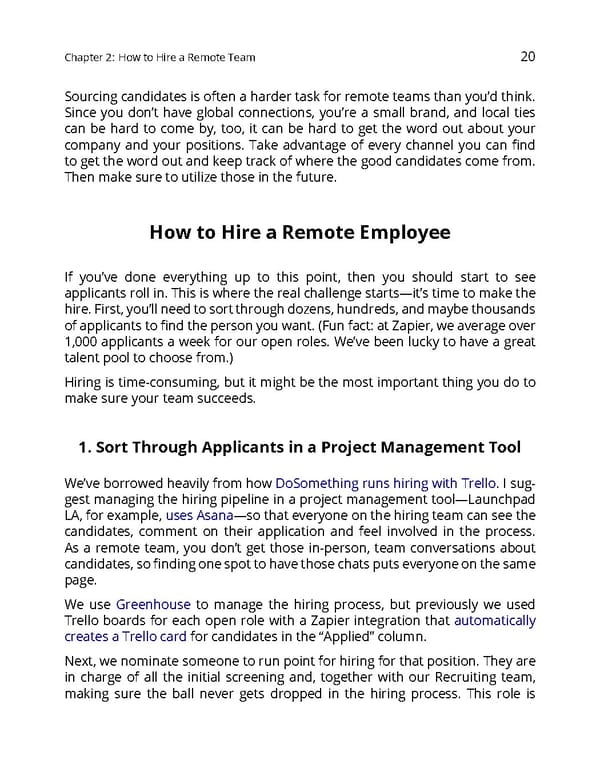Chapter2: HowtoHireaRemoteTeam 20 Sourcing candidates is often a harder task for remote teams than you’d think. Since you don’t have global connections, you’re a small brand, and local ties can be hard to come by, too, it can be hard to get the word out about your company and your positions. Take advantage of every channel you can find to get the word out and keep track of where the good candidates come from. Thenmakesuretoutilizethoseinthefuture. HowtoHireaRemoteEmployee If you’ve done everything up to this point, then you should start to see applicants roll in. This is where the real challenge starts—it’s time to make the hire.First,you’llneedtosortthroughdozens,hundreds,andmaybethousands of applicants to find the person you want. (Fun fact: at Zapier, we average over 1,000 applicants a week for our open roles. We’ve been lucky to have a great talent pool to choose from.) Hiring is time-consuming, but it might be the most important thing you do to makesureyourteamsucceeds. 1. Sort Through Applicants in a Project Management Tool We’ve borrowed heavily from how DoSomething runs hiring with Trello. I sug- gest managing the hiring pipeline in a project management tool—Launchpad LA, for example, uses Asana—so that everyone on the hiring team can see the candidates, comment on their application and feel involved in the process. As a remote team, you don’t get those in-person, team conversations about candidates,sofindingonespottohavethosechatsputseveryoneonthesame page. We use Greenhouse to manage the hiring process, but previously we used Trello boards for each open role with a Zapier integration that automatically creates a Trello card for candidates in the “Applied” column. Next, we nominate someonetorunpointforhiringforthatposition.Theyare in charge of all the initial screening and, together with our Recruiting team, making sure the ball never gets dropped in the hiring process. This role is
 The Ultimate Guide to Remote Work Page 23 Page 25
The Ultimate Guide to Remote Work Page 23 Page 25